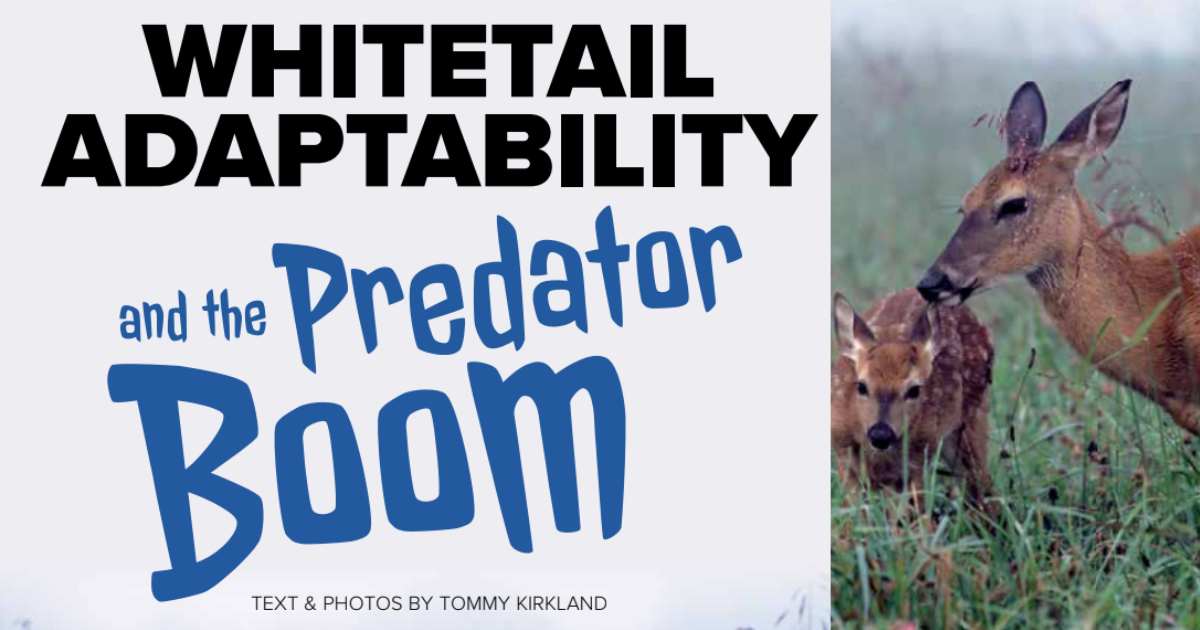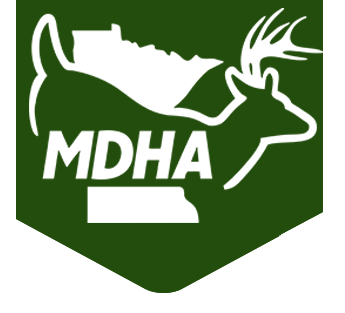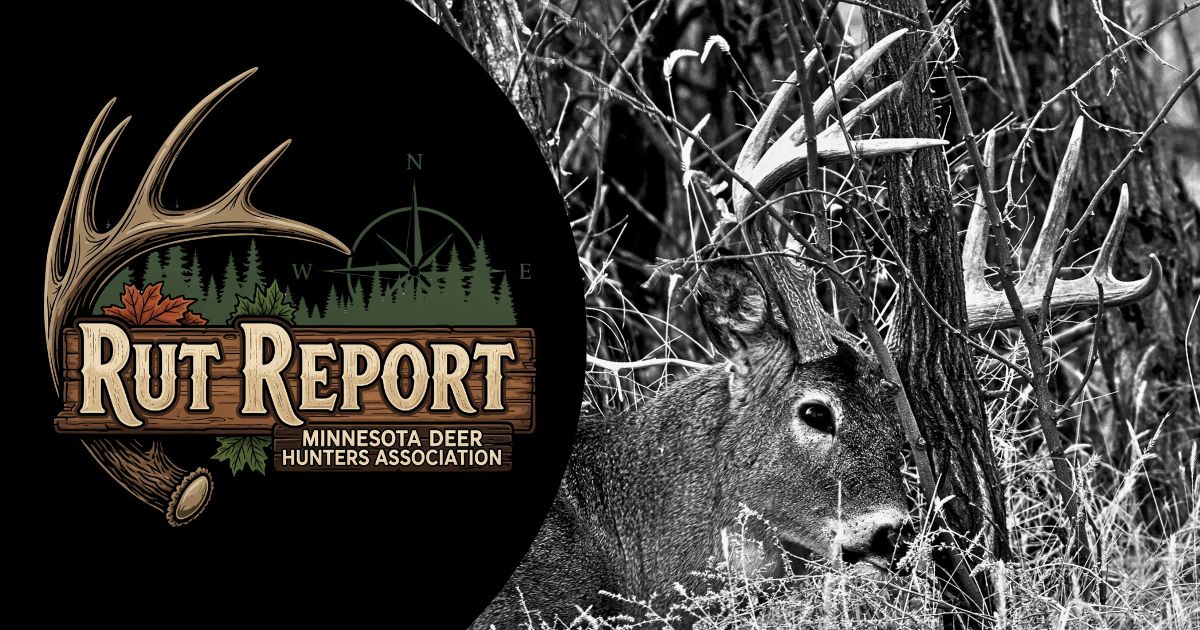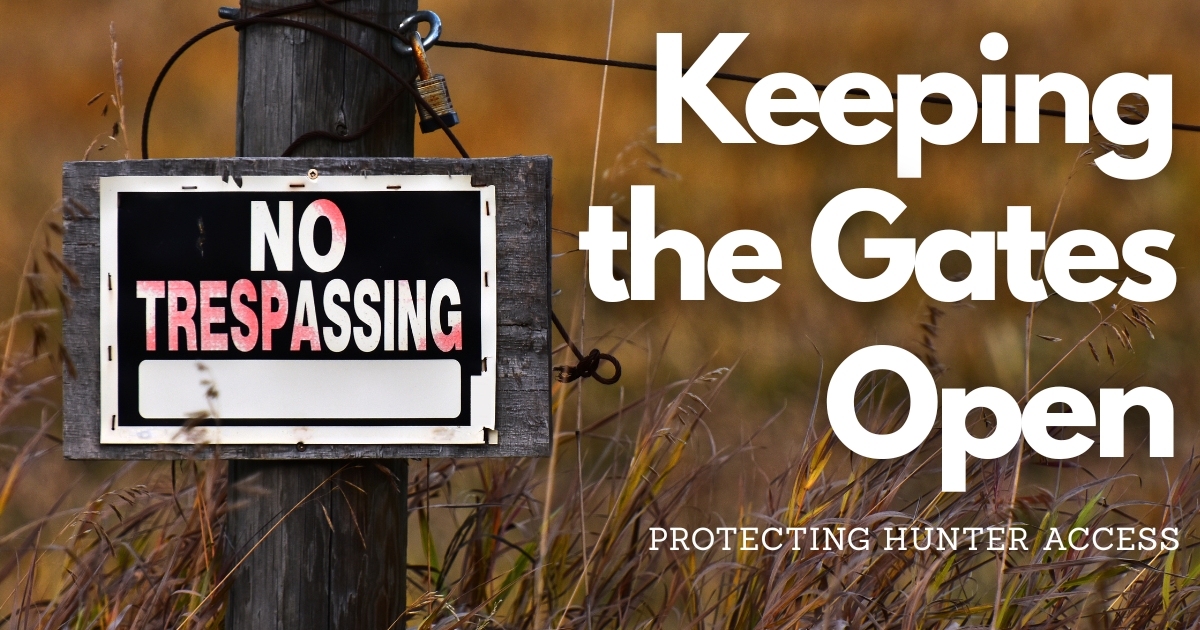
- Tommy Kirkland
- From Whitetales
- Hits: 3356
Whitetail Adaptability and the Predator Boom
- Tommy Kirkland
- From Whitetales
- Hits: 3356
Today, more information is unfolding regarding whitetails and predators. Yet can predators “alone” impact deer herds to the declining numbers that some hunters are experiencing; and when do management agendas tip the scales in favor of predators….?
A bedded newborn fawn lays concealed and motionless when a large coyote appears on the scene. Within moments, the fawn’s mother returns to the traditional fawning site. She is on high alert, and runs off for several yards - suddenly stopping. Yet the doe’s effort to draw the coyote to pursue her is to no avail.
As the coyote attempts to locate the hidden fawn, she then begins to approach the predator. She slowly raises her front legs, high steps with her hooves - stomping the ground, and lets out a loud snort!
She swiftly charges the canine and darts erratically around it; yet the yote doesn’t try to defend itself and even appears dumbfounded. She continues her defense for her infant until the predator finally moves on.
A Pendulum of Data
At times whitetails display an amazing ability to outwit predators. Other times they do not withstand the carnivorous assault. Coyotes, black bears, bobcats, and even wild hogs do have an impact on deer – primarily with the mortality of fawns. Wolves and cougars do pose a threat; yet their range is very limited in comparison to other predators.
Though not as common, a pack of domestic wild dogs can wreck havoc on whitetails. Overall, the degree of predator success varies from habitat to habitat depending on the management of predators, vegetative nutrition, deer densities, weather extremes, disease as well as the extent of antlerless harvest.
Up North, predators such as coyotes tend to be more effective on whitetails, mainly due to snow and ice hindering deer from successful evasiveness, and periodic nutritional stress. Down South, they are less successful in attacking adult deer; whereas fawns are falling prey. The scientific data and incidental observations are ongoing; and yet, the data fluctuates and is even contradictory in some cases – baffling hunters and managers regarding this very complex subject.
For example, studies conducted in South Carolina and Alabama determined that liberal antlerless harvest in conjunction with unmanaged coyotes was seriously impacting fawn recruitment. On the other hand, a Pennsylvania study concluded that although predators (bears, yotes, & bobcats) were consuming deer fawns, overall, the predatory behavior was not enough to curtail antlerless harvest.
Natural History Observations on Free Ranging Deer
When natural environmental events (disease, weather extremes, etc.) and human management influence deer populations, seeing the true reality of predator and prey relationships is somewhat distorted. Simply, predators have an edge once the environment, and or management leans in their favor.
Habitats with minimal to no predator control and very nominal deer reductions can unveil another aspect of how free-ranging whitetails adapt to an onslaught of predators. By observing predator and prey relationships with restricted human management simply allows the natural history to unfold. In turn, this approach can actually help to determine if certain wildlife management practices are “unintentionally” helping predators in their pursuit of whitetails.
So what is the survival rate of the whitetails in the midst of unmanaged predators; and is the ole doe really that vital for successful fawn recruitment?
The Old Doe
My personal anecdotal photographic field observations for over 30 years now; and several scientific studies, especially those of highly respected deer researcher Dr. John Ozoga from Michigan have shown that the old matriarch females of the family unit are by far the most successful parenting mothers; whereas younger mothers are more inclined to abandon their infants, especially when predators intrude.
Older females display superior adaptability by constantly shifting fawn bedding areas and utilizing vegetative cover to the fullest extent. They also tend to command vocal sounds and body gestures to fawns more so than younger females. This degree of communication contributes to teaching fawns the height of concealment - making it more difficult for predators to pinpoint them.
Being that old does hold a good track record of fawn recruitment, given adequate cover and nutrition; the odds are favorable for fawns to survive predator encroachment. Matriarchs have also been known to produce fawns even at the ages of 6 years and up, and work to maintain solid female clans for survival.
Nutrition & Predators
John Ozoga’s research and numerous other studies have determined that quality nutrition is vital for parenting mothers and their offspring. Newborn fawns not obtaining good nourishment from their mothers are more likely to call out. Their “bleat” echoes; and it doesn’t take long for predators to pinpoint the cries; whereas, “silent” healthy fawns have survived right in the midst of numerous predators.
With high quality food plots and supplemental feeders, deer move less and are more predictable. Fawns born near these concentrated feeding areas are more vulnerable - despite the nutritional benefits. Opportunistic predators quickly learn where the good food is; and fawns in the vicinity are just an added bonus.
With the recent influx of videos and trail cam photos conveying predators ravishing fawns as well as attacking adult deer, it needs to be stressed that a great deal of predatory success has an advantage due to concentrated food sources . Some of the digital footage is quite convincing, yet somewhat misleading. Overall, though food plots are vital for whitetails as well as the “controversial” tower feeders, these management tools are giving predators an edge in some cases.
When whitetails are foraging for native browse, they are typically more dispersed and harder to pattern. Numerous female groups in one particular photographic locale traversed more terrain in comparison to deer with supplemental feeding. Only when berry crops, or hard mast were abundant did predators and deer occasionally mingle; otherwise, predator activity was almost non-existent when deer mobilized in search of native browse. Although these doe clans kept a typical “home range” of roughly a half to occasionally a square mile radius, they were consistently mobilized in search of native browse, thereby minimizing their exposure to predators. Whereas deer that tend to have fed in more concentrated areas were easier for predators to pattern.
With that said, there are recommendations to capitalize on predator control around supplemental feeding areas. Of course, if black bears show up during fawning time to ravage the food plot, it is illegal to shoot them out of season – adding another dilemma to predator management.
Surprisingly, some deer herds tend to avoid open areas when coyotes prowl - excluding rutting bucks. During the late afternoon and at dusk, the deer fed; but when night fell, some deer took refuge in the adjacent timber, and old growth fields. When day broke, and the coyotes moved on, the whitetails came out to feed in the open until the rising temperatures forced them back to the woodlands. This type of pattern observed for several years clearly showed that these particular deer clans moved and fed in avoidance of concentrated predator activity.
Fawns Concealed & Out of Sight
The visual count of “fawn to doe ratios” usually reveals if fawn recruitment is working. Females with fawns indicate good survival rates; whereas, females without offspring signals that fawns could be falling prey to predators, nutritional stress, or abandonment.
One of the photographic locales has consistently shown that parenting females have been concealing their young to such an extent that visual ratio counts are extremely difficult to conduct. The fawns have survived; yet are out of sight. Unless one can confirm a female’s milk bag (udder) with active nursing, the initial impression is no fawns exist. Yet, when the grown up offspring comes out of nowhere in the fall, or even into late fall and winter, it reveals that fawn recruitment has been working.
This clearly reveals that some parenting females are not exposing their newborns – even after 2 to 3 months when deer fawns are old enough to out maneuver predators. Also, before the predator populations escalated, fawn to doe sightings were common. However, as predators increased, the deer adapted, using vegetative concealment to the fullest extent for longer periods of time.
Moderate to high counts of “fawn to doe ratios” may be the case with habitats controlling predators, or where predators are not prevalent. However, even where predators are not properly managed, the odds for fawn survival rates are still potentially good if older females are allowed to raise their young with adequate nutrition and good vegetative cover.
A Time to Fight & Family Social Structures
Incidental observations have consistently shown that the overwhelming majority of whitetails are evasive of roaming coyotes – using vegetative cover and woodlands with circular exodus routes. Yet in time, as predator numbers rose, several whitetail clans’ flight behaviors shifted. Some female deer, primarily older mothers, are now facing lone coyotes head on to protect their young. They have even grouped up to confront coyotes. These bizarre behaviors are taking place whether fawns are nearby or not.
Smaller deer groups with just yearlings and 2 year olds are less inclined to confront coyotes; and therefore more vulnerable. Simply, age and experience along with more numbers increases the chances for survival. This is typically the trend why wildlife naturally herds up.
This also brings into question as to what degree of antlerless harvest changes the social structure of female deer groups; and some scientific studies have questioned if this again contributes to adverse/negative effects on fawn recruitment. Simply, if the “normal” clan structures of female deer is disrupted through liberal harvesting, and the older matriarchs are removed, then predators such as coyotes will have an advantage due to inexperienced younger females that are less effective in successfully rearing newborns.
Natural History Breeding
One aspect that increases a fawn’s chances of survival is breeding and fawn birthing times know as fawn birthing synchronization. When female numbers are reduced through antlerless harvest; then rut breeding times are shortened with fewer females to mate. The following year, the fawn birthing times are also condensed to where most fawns are born at the same time. With so many fawns born all at once, theoretically, predators can’t keep up by the time fawns mature enough to evade on their own.
This management approach may work in certain habitats – depending on the diversity and number of predators. Yet, the outlook may not be so positive if the number of predators is too high. Also, some black bears as well as coyotes learn where traditional fawn birthing sites are. They also retain good memory of when fawns are hitting the ground.
The natural history of deer, despite management pitfalls in one photographic area, reveals that extended fawn birthing times can overcome an influx of numerous predators. Mating times are drawn out from late November to early January; in turn, the typical 198 day gestation periods are extended for birthing the following year. Fawns are born from May to late July. Deer fawns born early in the year are more vulnerable to predators, especially when the spring season lacks nutritious vegetation.
By summer, instead of searching for fawns, most bears are usually preoccupied with berries and breeding; and coyotes are also consuming more vegetative food sources at these times. Though some predators do learn to hunt fawns periodically throughout the summer months; overall, the majority of mid and late birthed fawns have been surviving – reflected by good “fawn to doe ratio” sightings, and lone yearling bucks as well as 2 ½ year old baskets bucks.
This outcome seems to suggest more females can help to ensure successful fawn recruitment even if predators are abundant. Of course, fawns are also affected by the availability of seasonal vegetative cover and nutrition from their mother. If these are lacking, predators can have an edge – regardless of birthing times. Also, one downside if deer populations are not properly managed through harvesting is that fawns are less inclined to survive for numerous other reasons such as malnutrition and abandonment.
There are accounts of good fawn recruitment when birthing times are condensed. Yet, observations have also shown that fawns born sporadically over time have survived an onslaught of predators.
Adaptability amid Suburban and Rural America
There are enough incidental observations throughout the country to show that older female deer are quick learners and highly adaptability when it comes to selecting fawn birthing grounds. Though there are still the occasional predators that defy normalcy, for the most part, coyotes and bears tend to avoid human populated areas.
Older female deer have been known to utilize suburban neighborhoods as well as other human habituated structures/locales to raise their young where predators are less inclined to roam. For example, some fawns are born right in the middle of college campuses adjacent to WMAs while others are born in neighborhood backyards and golf courses. For years, female deer in some state and national parks have birthing their offspring in recreational campgrounds. In short, the human activity and scent is usually a deterrent to roaming predators. These unique accounts clearly show how adaptable older female deer can be to increase the success of fawn recruitment.
Carousel of Management
Today, the natural history of whitetails in some habitats is showing that they can adapt and survive unregulated predators in adequate habitats – that is as long as the female social structures are not liberally reduced. These observations and other studies indicate that deer declines are not “solely” a predator issue. Properly managing deer densities for a particular habitat, quality nutrition, and vegetative cover all contribute to herd health. In turn, fawns have a better chance for survival when these events come together.
Those in the hunting industry who advocate the harvesting of older female deer may beg to differ in protecting them; yet research has shown that antlerless reductions has given predators an advantage in suppressing fawn recruitment; and that older females carry a higher fawn success rate than younger females.
Some hunting organizations and state agencies may have acted too fast when implementing liberal doe harvest years ago; and were taken by surprise with predators adversely impacting fawn recruitment. Yet even today with so many other biological changes and events unfolding, should deer herds across the country be “stereotyped” into a binding management agenda - just because doe harvest is working elsewhere?
Of course, harvesting female deer is periodically necessary, especially when their numbers exceed the habitat’s ability to sustain them. The question again is when; and how many antlerless tags to fill? Also, some scientific researchers have suggested that reducing or completely ceasing the harvest of female deer may be necessary if the CWD juggernaut continues on its current path.
Also, not every private hunting property and public lands can effectively manage predators – posing additional problems. As mentioned before, take into account environmental factors such harsh winters, disease outbreaks, drought, habitat degradation, vegetative cover, as well as liberal antlerless harvest; and deer numbers can undoubtedly decline when predators are taking fawns. Yet if other factors are not pressuring whitetails, a moderate to good portion of fawns can still survive even when predators are gripping the land.
To hopefully prevent extreme deer declines, numerous hunters and managers are now stressing that female bag limits should be adjusted according to accurate deer density surveys and predator activity for a hunting locale. Although predator and prey relationships are highly complex and ever-changing, adjusting management agendas and implementing consistent predator control will help to alleviate the pressure that predators can inflict on deer herds throughout the country.





